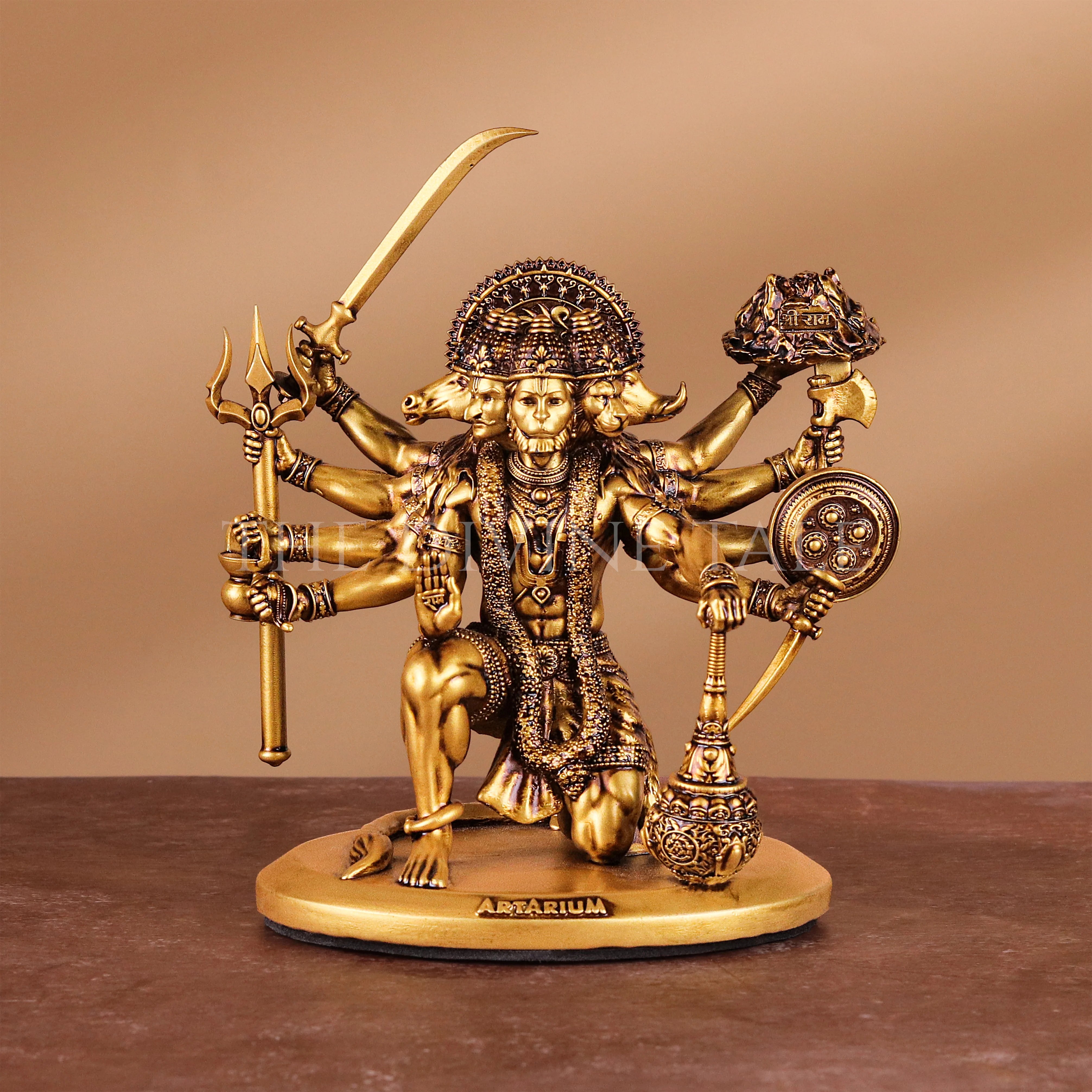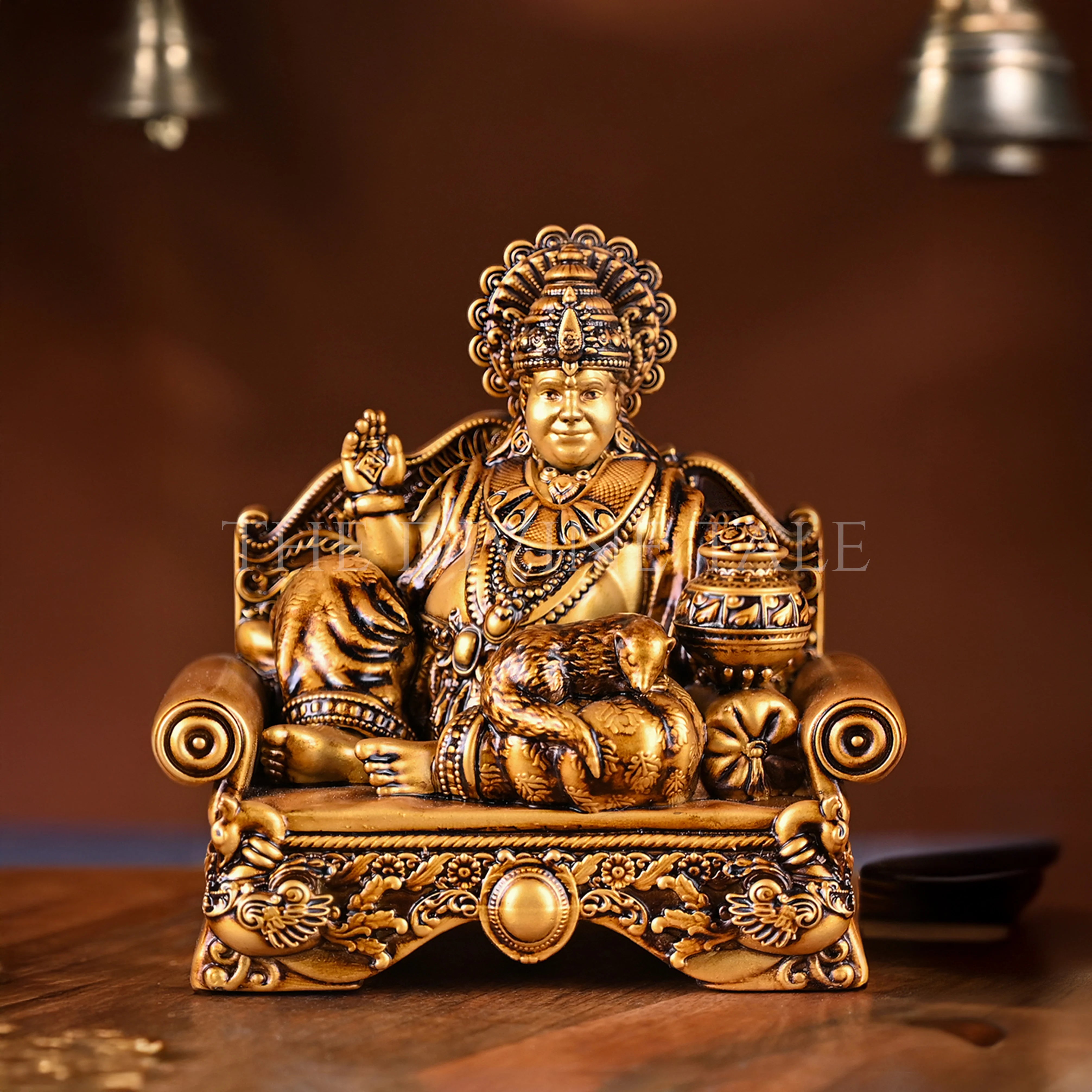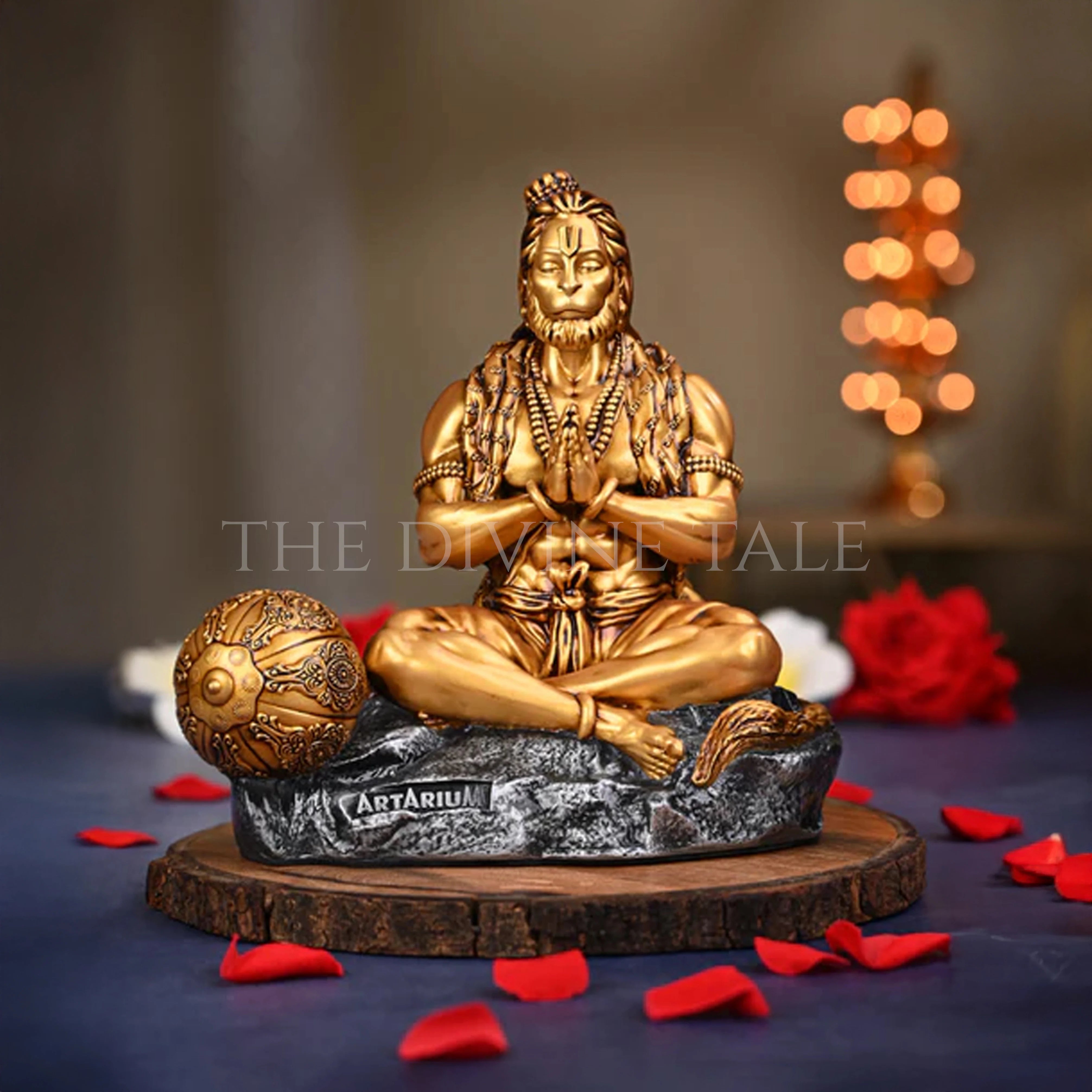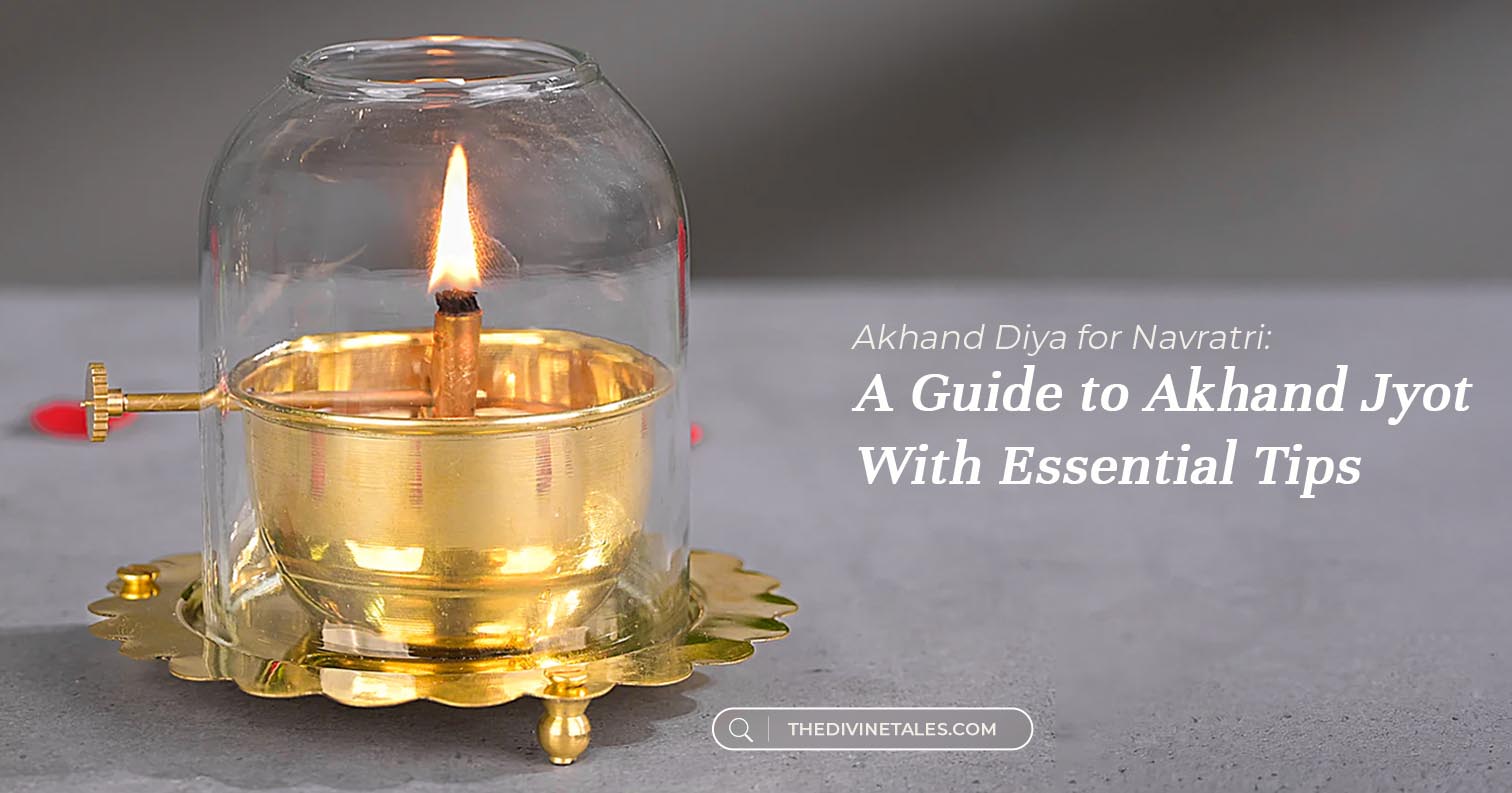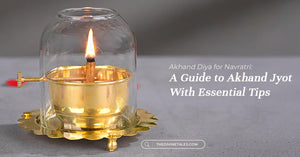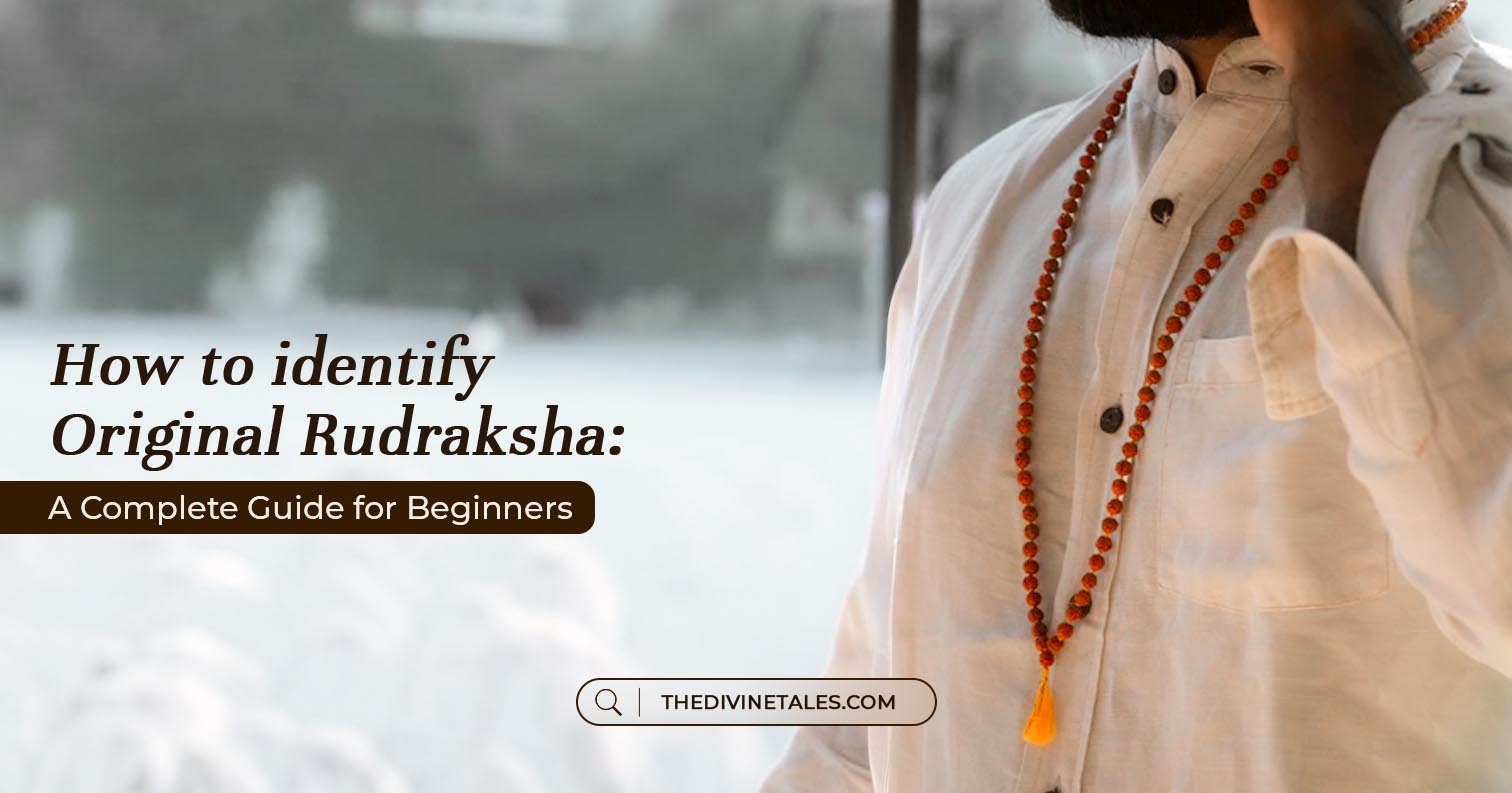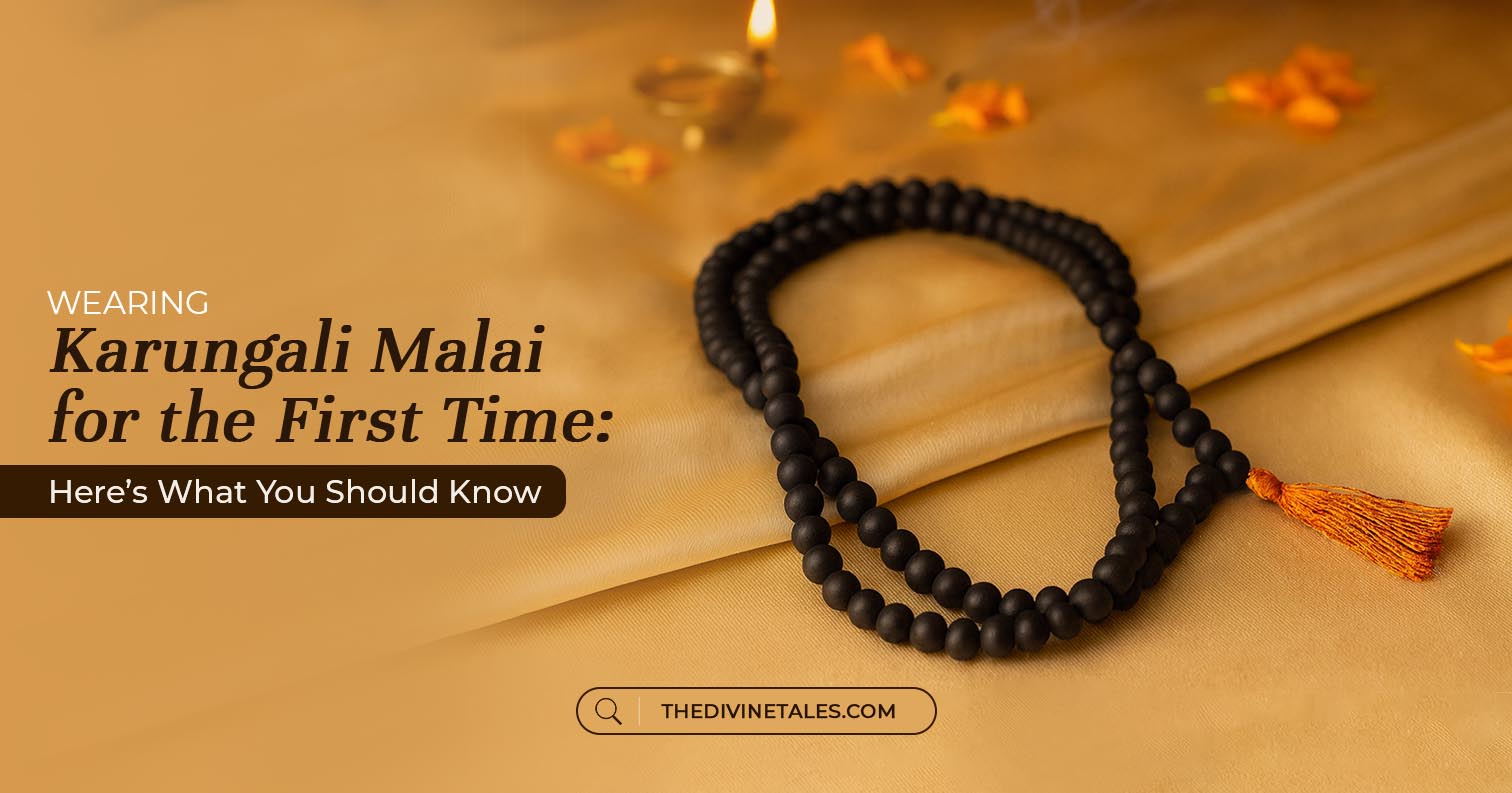Across countless Indian households, Navratri begins not with a dance step or a prayer, but with the lighting of an eternal flame - the Akhand Diya. Be it the sacred Gahtasthapana, symbolic Kanika Pujan, powerful Jai Ambe Gauri aarti, or even Durga Saptashati paath, an Akhand Jyot remains a thread that ties together every ritual and ceremony on Navratri. It is very much the heart of the festival, one act of devotion that brings together 110 crore devotees in India and many others across 30 countries. But have you ever wondered why the Akhand diya for Navratri is actually lit?
To answer this (and a few things more), we’ve put together this blog. Here, we will talk about why this diya for Navratri is an inseparable part of the festival and what the significance of this sacred Jyot is.
Spiritual Significance of Akhand Jyot for Navratri
Jyotishaamapi tajjyotistamsaha paramuchyate |
Jnyaanam jnyeyam jnyaanagamyam hridi sarvasya vishthitam ||
“The Self is the light of all lights, beyond darkness; it is knowledge, the object of knowledge, and the goal of knowledge, seated in the hearts of all.”
-Bhagavad Gita Verse 17, Chapter 13
Light is the source of all things. It is from which the universe emerged, with a big bang, and it will be the last thing the universe will see before collapsing. It is present in the smallest of atoms to the biggest stars, and most importantly, it is present within us all.
But, out of all the lights, it is the light within us that is eternal, an akhand diya that lives long after we are gone through our loved ones. It shapes our inner being, helps us fight our demons, and remains our guide in times of challenges. And it is to honor this light in the form of Goddess Shakti that we burn an akhand diya for Navratri.
The akhand jyot, then, rather than being a flame that fills our pooja mandir with a warm glow, becomes a symbol of shakti that flows through us - the divine energy that sustains the universe. Just as this unwavering flame burns steadily for nine nights, it reminds us of the eternal power, resilience, and protection that Goddess Durga embodies. In its constancy, we see our own strength to endure challenges. In its brightness, we find clarity to move past ignorance. And in its warmth, we feel the nurturing presence of the Mother Goddess.
The significance of the sacred jyot during Navratri becomes not only about inviting auspiciousness but rather about invoking Durga’s boundless energy into our homes and hearts. It is a vow to keep the flame of courage, devotion, and righteousness alive within us, no matter how dark the night outside may be.
Akhand Jyot Diya Benefits & Why You Should Light It?
In the Hindu philosophy and tradition, an Akhand diya for Navratri is said to bring an array of benefits. Here are some of them:
- Invites Wealth: An akhand jyot diya is said to draw prosperity and abundance into your home.
- Invokes Strength: The flames of the diya become a symbol of strength and resilience, dispelling negative energy in your space.
- Increases Wisdom: The flame of the Navratri akhand diya is constantly associated with knowledge and clarity. Lighting it is said to chase away ignorance.
- Brings Health: Keeping the diya lit is said to bring good health and improve the overall wellness of everyone in your home.
- Attracts Positivity: Lighting the diya is seen as a way to welcome good luck and positive energy.
How to Light the Akhand Jyot Diya?
It might seem simple on paper, but burning an Akhand diya for Navratri involves a few elaborate rules and practices. So, to ensure you do it right and receive the blessings of Maa Durga in your life, we have listed all the steps you need to follow, along with a few dos and don’ts.
Preparing & Lighting Your Diya for Navratri
-
Start by picking your brass diya for pooja. It can also be a silver or earthen diya if your taste is inclined towards either opulence or eco-consciousness.
-
After choosing the diya, pick a long, thick baati (cotton wick) or make one using a moli (also called kalawa or raksha sutra).
-
Fill the lamp with cow’s ghee, or if that’s not available, use pure sesame oil or mustard oil in your home.
-
Place the lamp on a clean chowki (platform) and draw an ashtadal (an eight-petalled lotus pattern) using gulal or raw rice.
-
At an auspicious time (as per Vikram Samvat), place the Akhand deep at the center of the ashtadal. Keep the ghee diya on the right side of the Goddess idol and an oil diya on the left.
-
Perform the pooja of the Akhand deep, apply a kumkum bindi (dot) on the lamp, and give akshat (rice offerings) as a symbol of prosperity.
-
Now, light the Akhand Diya while reciting the following Sanskrit shloka:
शुभं करोति कल्याणमारोग्यं धनसंपदा ।
शत्रुबुद्धिविनाशाय दीपज्योतिर्नमोऽस्तुते ॥
“I bow to the light of the lamp, the source of goodness, health, and abundance, which dispels negativity and ill-will. Salutations to the sacred light of this lamp.”
Things to Keep in Mind While Lighting the Navratri Akhand Diya
-
Make sure the wick is long enough to keep the flame burning steadily throughout all nine days of Navratri.
-
Keep an eye on the sacred flame to ensure it never goes out.
-
Top up the ghee or oil in the akhand jyot diya regularly, taking care that the burning tip of the wick does not dip into the fuel.
-
Always cover the lamp with a glass or metal lid to protect the flame.
-
If you’re using an earthen lamp, soak it in water overnight before use. This prevents it from absorbing too much oil or ghee while the lamp burns.
Things to Avoid While Lighting the Navratri Akhand Diya
-
Keep children away from the Navratri diya to prevent the flame from going out or accidents.
-
Always melt solid ghee before adding it to the lamp. Adding it in solid form may extinguish the flame.
-
Avoid lighting the lamp near toilets or bathrooms.
-
Never leave the Akhand Jyot unattended while it’s burning.
-
Do not use sunflower oil in the lamp. Stick to ghee, sesame, or mustard oil.
-
Keep the lamp in its designated place for all nine days of Navratri. Do not move it.
-
Do not light other lamps using the akhand diya for Navratri, as it is considered inauspicious.
-
Follow a light and vegetarian diet during the festival to maintain purity.
Who Should Light Akhand Jyot?
Anyone can light the Diya for Navratri and maintain it. However, it is widely believed that women who are undergoing menstruation should refrain from handling the akhand jyot. Additionally, whoever is taking care of the diya, he or she should maintain total cleanliness.
Bonus: 6 Diyas & Jyots to Light Up Your Home This Navratri
If you’re unsure which akhand diya for Navratri is right for you, we’ve put together a few pieces that will bring an incomparable charm and glow to your home. Each diya listed here carries a symbolic allure, making it not only a timeless investment but also a devotional gift that spreads light, positivity, and divine blessings.
- Divine Brass Akhand Jyot – The Divine Brass Akhand Jyot is an eternal flame of devotion. This Navratri diya is crafted in brass to keep your prayers burning bright.
- Brass Akhand Diya – This beautifully crafted piece is a timeless addition that fills your home with warmth, light, and positive energy. Bring the Brass Akhand Diya home or gift it to a loved one.
- Brass Panch Aarti (Jyot) – Celebrate every aarti with Brass Panch Aarti (Jyot). This Diya for Navratri is designed to enhance your spiritual rituals.
- Om Jyot (Diya) – Light the Om Jyot, made aesthetically to elevate your rituals, and invite harmony, peace, plus divine energy into your space.
- Brass Swastik Diya – A symbol of auspiciousness and prosperity, this akhand jyot diya is crafted to bless every corner of your home. The Brass Swastik Diya serves as a timeless reminder of tradition, wisdom, and purity.
- Brass Kerala Diya – The Brass Kerala diya combines the traditional Kerala design with a sacred flame, illuminating your pooja with grace and devotion.
So, Let’s Keep the Light Burning
Be it Goddess Shailaputri, who reminds us that even in darkness, light prevails, or Goddess Mahagauri, glowing like the soft light of the full moon - this Durga Ashtami lets us follow the tradition of lighting an akhand diya for Navratri the right way and with the right intention.
Let the steady glow of the Akhand Jyot guide our hearts, dispel negativity, and fill our homes with blessings for all nine nights. Shubh Navratri!

